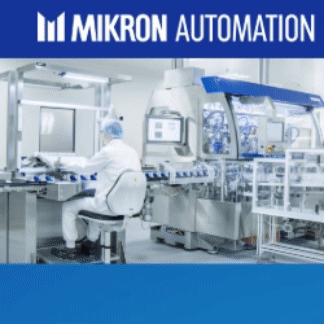Ocuphire Announces Publication of MIRA-1 Phase 2b Results Demonstrating Reduction of Pharmacologically Induced Mydriasis
Ocuphire Pharma recently announced that the results from the MIRA-1 (NCT04024891) Phase 2b clinical trial evaluating the safety and efficacy of Nyxol in the reversal of mydriasis (dilation of pupil for eye exams) have been published in Optometry and Visual Science, the international, peer-reviewed journal of the American Academy of Optometry. The article will appear in the print edition and is available on-line at www.optvissci.com.
“The continued peer-reviewed publications of our Nyxol clinical trial results allow us to highlight the iris dilator mechanism and emerging product profile of Nyxol. The findings of the MIRA-1 trial specifically demonstrate the potential of Nyxol to offer a safe and effective option for the reversal of mydriasis indication, for which there are presently no FDA approved therapies. The recently enrolled MIRA-2 Phase 3 pivotal trial leveraged the design and findings of the MIRA-1 Phase 2b trial,” said Mina Sooch, MBA, President and CEO of Ocuphire Pharma.
The paper, titled Phentolamine Eye Drops Reverse Pharmacologically Induced Mydriasis in a Randomized Phase 2b Trial, reported the following key findings:
- In the Nyxol treatment group, 29% of subjects met with statistical significance return to within 0.2 mm of their baseline pupil diameter (PD) at 2 hours, compared with 13% in the placebo group. A significant difference was also seen at 4 hours and was independent of mydriatic agent.
- Nyxol eye drops demonstrated a significant improvement over placebo in reducing pupil diameter at 2 hours from the time of maximum pupil diameter, regardless of mydriatic agent. A significant improvement was also seen at 1, 4, and 6 hours.
- Treatment with Nyxol eye drops led to a reduction in time to return to baseline pupil diameter of nearly 2 hours when compared to placebo.
- When treated with Nyxol eye drops, 63% of subjects returned to their accommodative baseline 2 hours after tropicamide-induced mydriasis, a statistically significant increase relative to 38% of subjects treated with placebo.
- Nyxol eye drops demonstrated a favorable safety profile, with roughly one third of subjects experiencing mild conjunctival redness, but no other systemic or ocular adverse effects. Moreover, whether given Nyxol or placebo, any discomfort occurring after treatment was mild in intensity.
“Many of my patients explain how frustrated they are by the lasting and disruptive effects of pupil dilation,” said Dr. Paul Karpecki O.D., Director of Cornea Services for the Kentucky Eye Institute. “The results from the MIRA-1 Phase 2b trial demonstrate that Nyxol continues to be a promising candidate that might offer a solution that could greatly improve the patient experience after dilated eye exams.”
Highlights of this double-masked, randomized, placebo-controlled, multi-center Phase 2b clinical trial were presented at the 2020 annual meeting of the Association for Research in Vision and Ophthalmology (ARVO) by Dr. Paul Karpecki via video submission. For more information on the MIRA-1 trial design, refer to Clinicaltrials.gov NCT04024891.
The MIRA-1 results informed the trial design of the Phase 3 MIRA-2 registration trial that recently completed recruitment. MIRA-2 is designed as a multi-center, randomized, double-masked, placebo-controlled, parallel, 24-hour Phase 3 trial that planned 168 healthy subjects, and ultimately enrolled 185 subjects. The primary efficacy endpoint for MIRA-2 is the percentage of subjects (study eyes) returning to within 0.2 mm of baseline pupil diameter at 90 minutes. Ophthalmic secondary efficacy endpoints include the percentage of subjects returning to baseline PD at other timepoints, mean change in pupil diameter from mydriatic maximum at multiple timepoints, and percent of subjects returning to baseline accommodation (with tropicamide). Efficacy endpoints will be analyzed at all timepoints and stratified by mydriatic agent and iris color. Safety assessments will include heart rate (HR), blood pressure (BP), conjunctival redness, and tolerability. For more information on the MIRA-2 trial design, refer to Clinicaltrials.gov NCT04620213.
There are 3 noteworthy design differences between the MIRA-2 and MIRA-1 trials. First, the MIRA-1 trial was conducted only in dark irides, which are less responsive to both dilating agents and alpha-1 blocking agents (such as Nyxol). MIRA-2 enrolled an equal number of subjects with light and dark irides. Second, in MIRA-2, two drops of Nyxol were administered in the study eye compared to one drop of Nyxol in MIRA-1. Third, MIRA-2 is employing a 3:1:1 phenylephrine:tropicamide:paremyd randomization schema for mydriatic agents rather than 1:1 phenylephrine:tropicamide in MIRA-1. In MIRA-1, it was shown that phenylephrine-induced mydriasis reverses faster upon administration of Nyxol. Topline results for the Phase 3 MIRA-2 registration trial are expected in March 2021.
Every year in the US, approximately 100 million eye exams are performed that require dilation of the pupil (mydriasis) to examine the back of the eye either for routine check-ups, disease monitoring or surgical procedures. Depending on the individual and the color of their eyes, the pharmacologically-induced dilation can last anywhere from 6 to 24 hours. Dilated eyes have a heightened sensitivity to light and an inability to focus on near objects, causing difficulty with reading, working, and driving.
Market research conducted by GlobalData surveyed several hundred patients and eye care providers (optometrists and ophthalmologists) about Reversal of Mydriasis (as well as Night Vision Disturbances and Presbyopia). Over 65% of surveyed patients reported moderate to severe negative impact of a dilated exam, underscoring the potential value of Nyxol’s role in improving comfort and daily function after pupil dilation. Additionally, an estimated 45% of patients responded that they would be very likely to request a dilation reversal drop, and more than 40% of eye care providers would be likely to use a reversal drop if such a treatment were commercially available.
Ocuphire is a publicly traded, clinical-stage ophthalmic biopharmaceutical company focused on developing and commercializing therapies for the treatment of several eye disorders. Ocuphire’s pipeline currently includes two small-molecule product candidates targeting front and back of the eye indications. The company’s lead product candidate, Nyxol Eye Drops, is a once-daily preservative-free eye drop formulation of phentolamine mesylate, a non-selective alpha-1 and alpha-2 adrenergic antagonist designed to reduce pupil size, and is being developed for several indications, including dim light or night vision disturbances (NVD), reversal of pharmacologically-induced mydriasis (RM), and presbyopia, and has been studied in 7 Phase 1 and 2 trials. Ocuphire’s second product candidate, APX3330, is an oral tablet designed to inhibit angiogenesis and inflammation pathways relevant to retinal and choroidal vascular diseases, such as diabetic retinopathy (DR) and diabetic macular edema (DME), and has been studied in 11 Phase 1 and 2 trials. Nyxol is entering Phase 3 clinical development for NVD and RM, and Phase 2 for presbyopia. APX3330 is entering Phase 2 clinical development for DR/DME. As part of its strategy, Ocuphire will continue to explore opportunities to acquire additional ophthalmic assets and to seek strategic partners for late-stage development, regulatory preparation and commercialization of drugs in key global markets. Please visit www.clinicaltrials.gov to learn more about Ocuphire’s completed Phase 2 clinical trials and ongoing Phase 3 registration trials (NCT04620213 and NCT04638660), Phase 2 trial in presbyopia (NCT04675151) and soon to recruit Phase 2 trial in DR/DME (NCT04692688). For more information, visit www.ocuphire.com.
Total Page Views: 850













